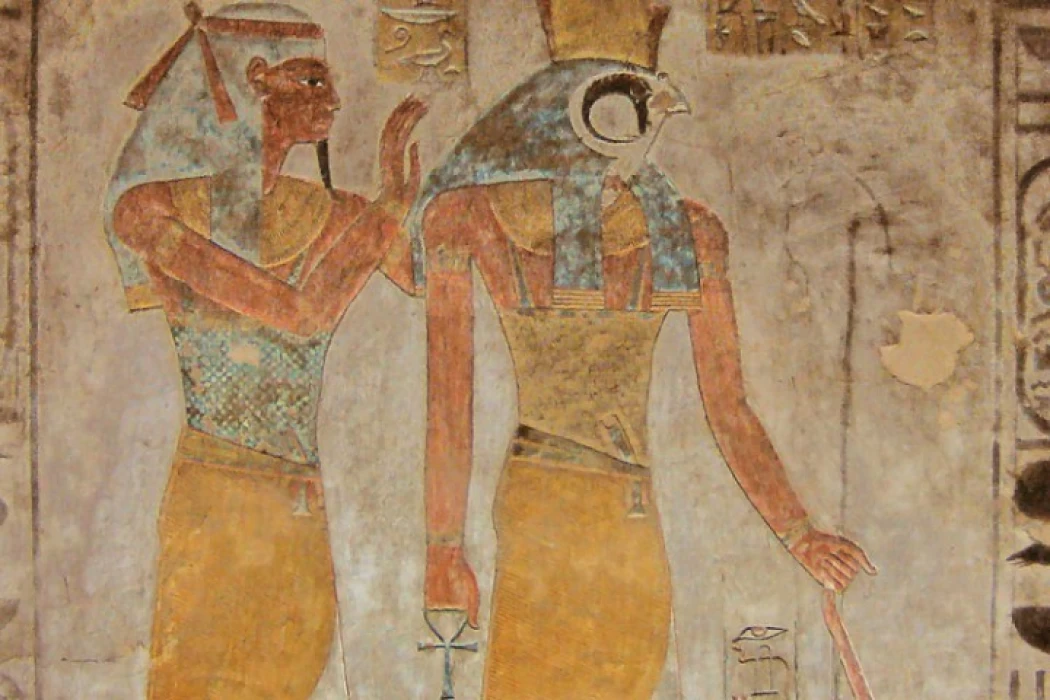
God Geb | God of the Earth
Fact About God Geb
The Egyptians believed that Geb's laughter caused earthquakes and that his kindness allowed crops to grow. Some priests considered him the first king of Egypt. The god Geb was the personification of the earth and was one of the most important and eternal deities. His long-standing status is evident from his frequent mention in the Pyramid Texts as one of the most frequently mentioned gods in the texts; he is often compared or contrasted with the god Ra or other important deities of the afterlife for the ancient Egyptians.
Geb was also considered the ruling god, and the rule was given to Horus the king as the son of the god Osiris, the grandson of the god Geb, and the heir to his throne on earth. The lovemaking between Geb and Nut gave life to the earth, after which they were separated by Shu, the god of air. One of his titles is “Father of Serpents.”
Geb was considered the heir of the gods as the son of the gods Atum and Shu. He was closely associated with kingship as the father of the god Osiris, the legendary king; the king himself was known as the heir of Geb. Geb played a significant role in the transfer of legitimate kingship and in the myth of the conflict between Horus and Set.
Geb is represented in human form like all other cosmic deities, or he is also represented in human form with the crown of Lower Egypt, or bent on his side supporting himself with one of his arms under the sky according to his mythological role.
He may also be depicted as a white-fronted goose, or as a man holding a goose in his hand, in connection with the creation process, and a goose may appear on his head, to distinguish him as in the attached figure. He was also depicted with the head of a rabbit in the tomb of "Ramses VI". In all his forms, "Geb's" skin may take on a green color as a symbol of fertility and the green plants that grow on it, and sometimes his body may be decorated with plants.
Geb was considered the prince of the Egyptian gods, this deity symbolized fertility as being the beginning of life. On the other hand, it was responsible for supplying the minerals and precious stones found underground.
The deity was represented by a man with green skin, its color symbolized the land of the Nile, the vegetation, and life, it was also visualized with a goose on its head since this bird is its personification.
His parents were Tefnut and Shu who gave him the throne leaving him as heir, after the conspiracy by Apophis, who was a serpent who represented evil, which made him the third pharaoh.
Geb had a sister named Nut, who was his wife. This union represented one of the couples that made up the Heliopolitan Ennead, from that relationship, four children were born: Osiris, Isis, Seth, and Nephthys.
The earth god, could also be found lying on the ground with his erect penis, trying to reach his wife without triumph, since his father was in charge of separating them, Shu could be seen in the middle of the two, representing the valleys and mountains that keep them away.
By dominating the underworld, Geb was in charge of keeping captive the souls that had not been just, representing the sarcophagus box, while Nut was the cover of it, thus incarnating the guardian of the gates of heaven.
Geb is shown as a man on the earth, with his sister Nut, the sky goddess, standing atop him and covered in stars. The rest of the scene shows their parents Shu, the air god, raising his arms, and Tefnut, the moisture goddess, mentioned only by name, and the god Ra riding the sun boat.
«Geb» is sometimes depicted in the form of a human carrying a goose on his head, and his name is written in two syllables «goose and man», where the man is pronounced as the letter «b». As for the goose that the ancient Egyptians chose to write the name «Jeb», it is a Nile goose that was domesticated by the ancient Egyptians in the early days.
The god «Geb» had beneficial qualities and characteristics, as green grains came out of his rib, and plants grew on his back. «Geb» was the source of fresh water, and the source of everything the earth produced, so it was directly linked to the fertility of the earth and the gate.
The power of «Geb» sometimes had harmful aspects, as earthquakes occur when he laughs, and he can prevent his blessings in times of drought, or in arid regions, and because of its importance as a distress to the earth, it may represent a grave.
«Geb» was depicted in many scenes and inscriptions in temples, and it was also associated with some characteristics of popular religion, as it was associated with healing, and its ability to heal was great, so it was supplicated to in some paragraphs in order to heal from a scorpion sting.
Although he did not have a major cult or belief of his own, he was depicted in many scenes and inscriptions in temples, and was also associated with some characteristics of popular religion, as he was associated with healing, and his ability to heal was great, so he was supplicated to in some paragraphs in order to heal from Scorpion sting.














